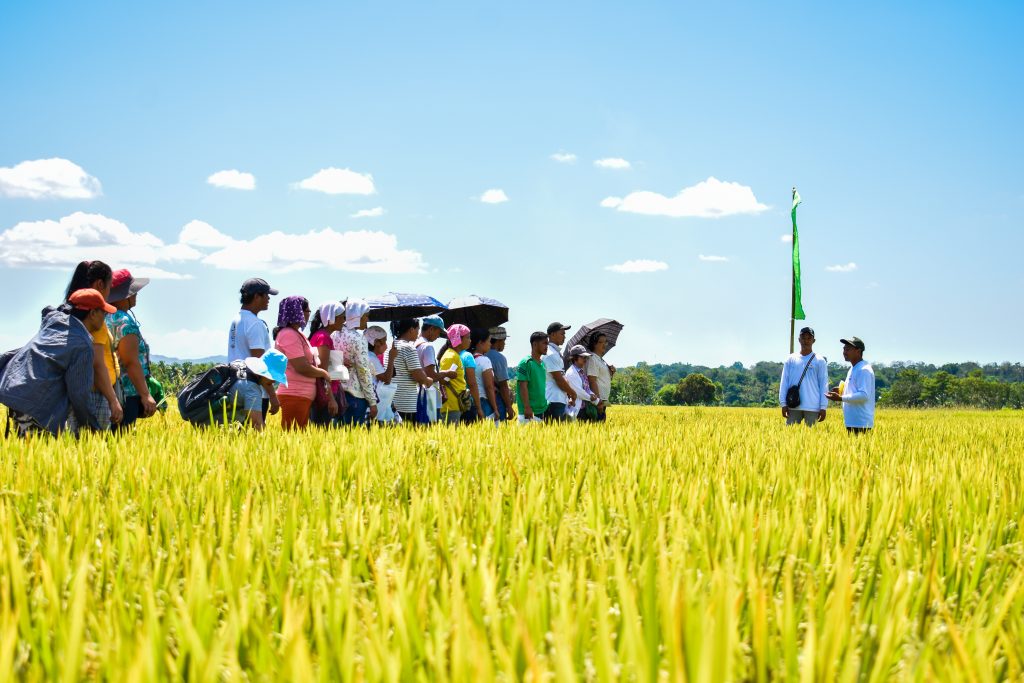
Under the Rice Competitiveness Enhancement Fund Seed Program, PhilRice Isabela established 16 additional sites and organized ceremonial events to expand the PalaySikatan technology demonstration project this wet season in Region 2 and Cordillera Administrative Region (CAR).
Short lectures, machine use demonstration, and distribution of knowledge products were conducted.
Reynaldo L. Cabato, a farmer-cooperator from Bayombong, Nueva Vizcaya shared that more than 200 farmers attended the field day at his demonstration farm.
“Participating farmers witnessed the different characteristics of NSIC Rc 506, 512, 480, and 216. They appreciated these varieties, and the advantages of using the seed spreader for direct seeding,” he said.
On Cabato’s first attempt in using the seed spreader in the dry season, he harvested 8t/ha compared to his usual average yield of 6t/ha. He followed the recommended seeding rate of 40kg/ha, right element, amount, and timing of applying fertilizer, and did regular field monitoring.
Relying on Cabato’s experiences, Betty B. Fabionar, a new farmer-cooperator in Alfonso Lista, Ifugao, is expecting a higher yield this season than her usual 4-5t/ha.
Fabionar doubted at first the utilization of 40kg/ha seeding rate because she has been consuming 100-120kg/ha in direct seeding.
“Fellow farmers have seen my farm, and many of them are now interested in trying to plant seeds not exceeding 60 kg/ha and the machine [seed spreader] we used for direct seeding,” Fabionar added.
Fabionar and Cabato used the seed spreader for direct seeding and they both benefited from reduced crop establishment cost—from PhP9,000 to PhP3,000 and from PhP15,000 to PhP5,000, respectively.
This wet season, RCEF Isabela has scaled up the project to 25ha sites with 24 farmer-cooperators operating in Bagabag, Nueva Vizcaya.
Moreover, techno-demos are expected to widen the project’s scale through cluster demonstration or PalaySikatan 2.0 from a 3ha site to 25-50ha.




